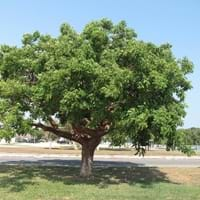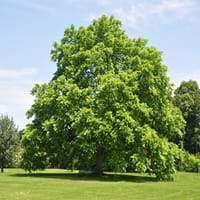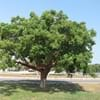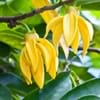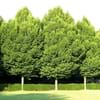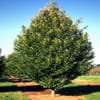Life Span
Perennial
Biennial
Origin
Southeastern United States, Caribbean, Central America
North America, United States, Northeastern United States, Mid-Atlantic United States, North-Central United States, Central United States, Canada
Types
tourist tree, turpentine tree, chaca
Not Available
Habitat
Riverbanks, Sandy stream banks, Tropical rainforest
Anthropogenic, Floodplains, Forests
USDA Hardiness Zone
10-15
3-9
Sunset Zone
H1, H2, 13, 22, 23, 24
1a, 1b, 2a, 2b, 3a, 3b, 4, 5, 6, 7, 8, 9, 14, 15, 16, 17
Habit
Twisted/Contorted
Oval or Rounded
Flower Color
Ivory
Yellow green
Flower Color Modifier
Bicolor
Bicolor
Fruit Color
Crimson, Copper
Green, Brown
Leaf Color in Spring
Not Available
Light Green
Leaf Color in Summer
Green, Dark Green
Green, Dark Green
Leaf Color in Fall
Dark Green
Yellow, Gold
Leaf Color in Winter
Dark Green
Not Available
Leaf Shape
Compound
Pinnate
Plant Season
Spring, Summer, Fall, Winter
Spring, Summer, Fall
Sunlight
Full Sun, Partial Sun
Full Sun
Type of Soil
Loam, Sand
Clay, Loam
The pH of Soil
Neutral, Alkaline
Acidic, Neutral, Alkaline
Soil Drainage
Well drained
Well drained
Bloom Time
Summer, Indeterminate
Late Spring, Early Summer
Tolerances
Drought, Salt
Not Available
Where to Plant?
Ground
Ground
How to Plant?
Seedlings, Transplanting
Seedlings
Plant Maintenance
Medium
Medium
Watering Requirements
occasional watering once established
Average Water Needs, Do Not over Water, Requires regular watering
In Summer
Lots of watering
Lots of watering
In Spring
Moderate
Moderate
In Winter
Average Water
Average Water
Soil pH
Neutral, Alkaline
Acidic, Neutral, Alkaline
Soil Type
Loam, Sand
Clay, Loam
Soil Drainage Capacity
Well drained
Well drained
Sun Exposure
Full Sun, Partial Sun
Full Sun
Pruning
Remove damaged leaves, Remove dead branches, Remove dead leaves
Remove damaged leaves, Remove dead branches, Remove dead leaves
Fertilizers
All-Purpose Liquid Fertilizer
All-Purpose Liquid Fertilizer
Pests and Diseases
Red blotch
Red blotch
Plant Tolerance
Drought
Not Available
Flowers
Showy
Insignificant
Flower Petal Number
Single
Not Available
Fragrant Leaf
Yes
Not Available
Fragrant Bark/Stem
Yes
Not Available
Foliage Texture
Medium
Coarse
Foliage Sheen
Glossy
Matte
Attracts
Birds, Butterflies, Deers, Hummingbirds
Birds, Squirrels
Allergy
allergic reaction, Eye irritation, Mouth itching, Vomiting
Gastric, Pollen
Aesthetic Uses
Bonsai
Not Available
Beauty Benefits
Improve skin condition, Making cosmetics, Removes pimples
Good for skin
Edible Uses
Sometimes
Yes
Environmental Uses
Air purification, Forms dense stands, Nesting sites for birds, soil stabilisation
Air purification, Shadow Tree
Medicinal Uses
Aging, anti-inflammatory, antimicrobial, Headache
Dysentry, Intestinal irritations, Small pox, Stomach pain
Part of Plant Used
Bark, Leaves
Sap, Seeds
Other Uses
Application in Furniture, Can be made into a herbal tea, Cosmetics
Application in Furniture, Decorative veneers, flooring, paneling, Herbicide
Used As Indoor Plant
No
No
Used As Outdoor Plant
Yes
Yes
Garden Design
Feature Plant, Shade Trees, Street Trees, Tropical
Edible, Shade Trees
Botanical Name
BURSERA simaruba
JUGLANS cinerea
Common Name
Gumbo Limbo, Tourist Tree, Turpentine Tree
Butternut
In Hindi
Bursera simaruba
Butternut Tree
In German
Bursera simaruba
Butternut Baum
In French
Bursera simaruba
noyer cendré
In Spanish
Bursera simaruba
árbol de nogal
In Greek
Bursera simaruba
Butternut Δέντρο
In Portuguese
Bursera simaruba
Árvore Butternut
In Polish
Bursera simaruba
butternut Drzewo
In Latin
Bursera simaruba
Butternut ligno
Phylum
Angiosperms
Magnoliophyta
Class
Eudicotyledones
Magnoliopsida
Order
Sapindales
Juglandales
Family
Burseraceae
Juglandaceae
Clade
Eudicots
Angiosperms, Eudicots, Rosids
Tribe
Not Available
Not Available
Subfamily
Not Available
Not Available
Number of Species
Not Available
Not Available
Importance of Gumbo Limbo and Butternut Tree
Want to have the most appropriate plant for your garden? You might want to know the importance of Gumbo Limbo and Butternut Tree. Basically, these two plants vary in many aspects. Compare Gumbo Limbo and Butternut Tree as they differ in many characteristics such as their life, care, benefits, facts, etc. Every gardener must at least have the slightest clue about the plants he wants to plant in his garden. Compare their benefits, which differ in many ways like facts and uses. The medicinal use of Gumbo Limbo is Aging, anti-inflammatory, antimicrobial and Headache whereas of Butternut Tree is Dysentry, Intestinal irritations, Small pox and Stomach pain. Gumbo Limbo has beauty benefits as follows: Improve skin condition, Making cosmetics and Removes pimples while Butternut Tree has beauty benefits as follows: Improve skin condition, Making cosmetics and Removes pimples.
Compare Facts of Gumbo Limbo vs Butternut Tree
How to choose the best garden plant for your garden depending upon its facts? Here garden plant comparison will help you to solve this query. Compare the facts of Gumbo Limbo vs Butternut Tree and know which one to choose. As garden plants have benefits and other uses, allergy is also a major drawback of plants for some people. Allergic reactions of Gumbo Limbo are allergic reaction, Eye irritation, Mouth itching and Vomiting whereas of Butternut Tree have Gastric and Pollen respectively. Having a fruit bearing plant in your garden can be a plus point of your garden. Gumbo Limbo has showy fruits and Butternut Tree has showy fruits. Also Gumbo Limbo is not flowering and Butternut Tree is not flowering . You can compare Gumbo Limbo and Butternut Tree facts and facts of other plants too.
